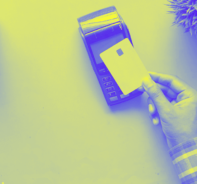ISO 20022 explained: What is ISO 20222 and why does it matter?
ISO 20022 is becoming the global common standard for data-rich financial messaging. Over the next few years, it will become the financial messaging standard for banks and the global financial industry — and it will affect everything from FX to securities. And its impact on payments will be large.
Why ISO 20022 Matters
People in finance have been talking about ISO 20022 for years. But now it’s at a tipping point, especially for payments, because the industry is moving away from SWIFT MT (the widely used existing system) to ISO 20022 (the emerging system, which improves end-to-end payment processing). The final worldwide implementation date will be in 2025.
A Challenge and an Opportunity
Most banks today are still using the messaging platform that has been in operation for many years. For the most part, banks’ backend systems align with the payments messaging standard that SWIFT uses — MT, which stands for Message Type.
But the ISO 20022 messaging standard will be much larger in size. While it provides a significant opportunity for banks to improve their payments ecosystems, it is putting a strain on existing infrastructure.
For decades, SWIFT has been the dominant global messaging network outside of the bank. As competing networks have emerged and financial sector change has sped up, banks and payments institutions have discovered a growing need to route messages between multiple different external networks. This has created the need for a more accurate and speedier global payments messaging standard.
ISO 20022 puts banks at a crossroads. Do they move forward with their current infrastructure in the hope it can accommodate richer media and data fields? Or do they build or buy more advanced infrastructure that has the agility to keep pace with a rapidly emerging payments standard?
Three Common Questions
What Does ISO 20022 Mean For Banks?
If you’re a banking executive in North America, the Eurozone or UK, it’s likely your systems are optimized to handle SWIFT MT. ISO 20022 is becoming a complex transition. With 2025 not far away, banks that have started this change process are realizing it’s not a simple IT project. Because the richer messages made possible by ISO 20022 are going to touch multiple backend systems, it’s not only core banking applications that will be affected. For many banks, what first appeared to be a compliance project has changed into a deeper digital transformation push.
How Can Banks Adapt To Accept And Process ISO 20022 Messages?
- Consider APIs that help you ‘plug in’ to both existing and evolving messaging systems, with the ability to support SWIFT MT to MX transformations without impacting existing systems.
- Consider encouraging relevant staff to take available ISO 20022 certifications, such as the one provided by SWIFT.
- Banks may also need to consider investing in ISO validator tools, to check that payment instructions meet the new standardized guidance.
Does ISO 20022 Mean Banks Must Replace All Existing Backend Systems?
Understandably, banks are reluctant to discard functioning backend systems, given these costs could run up into the millions. It’s possible to find a middle ground, where banks’ legacy backend systems can be turned into separate microservices.
Learn How Rapyd Fintech as a Service Powers Borderless Banks
Subscribe Via Email
Thank You!
You’ve Been Subscribed.



